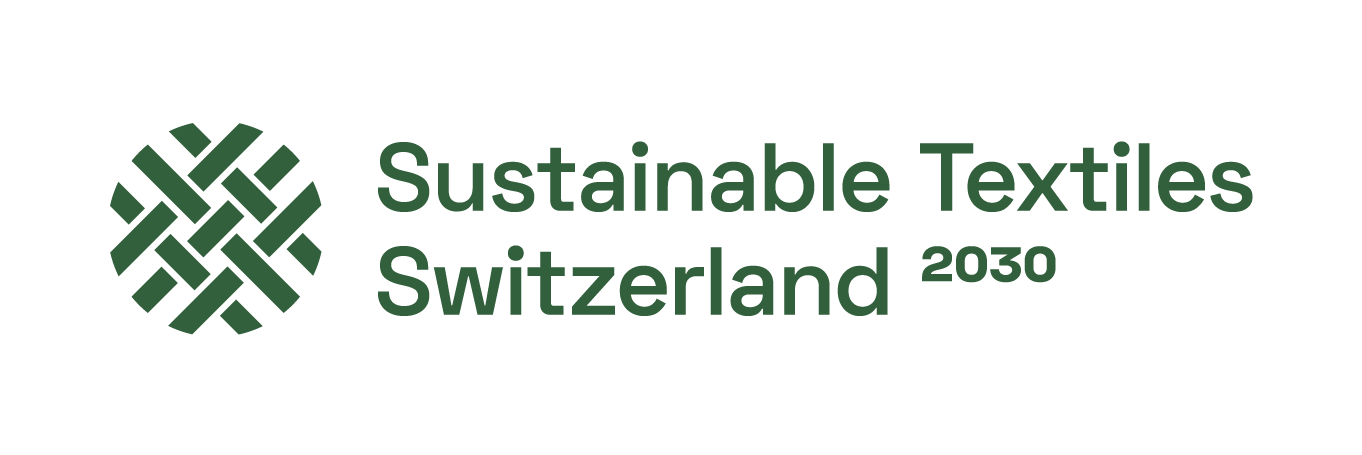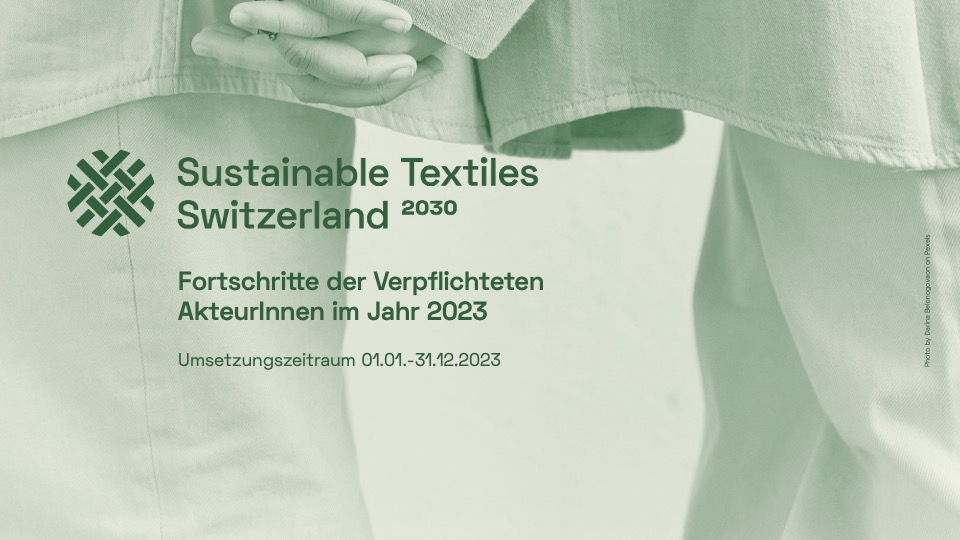Bild: STS 2030
Implementation of the measures to achieve the Sustainable Textiles Switzerland 2030 sustainability goals has been underway since the beginning of 2023 (STS 2030). The program sets targets for the Swiss textile and clothing industry in the areas of transparency, climate, working conditions and the circular economy. The actors who have committed to the goals are now disclosing their progress for the first time and showing how far they have come in the first year.
The program sets out a precise timetable for implementing the targets and measures. For example, those who sign up have 18 months from the date of their commitment to measure their greenhouse gas emissions. By the end of 2023, 29 players in the textile and clothing industry had signed up to the targets. The results of the industry’s progress are now available. These are based on the committed actors’ own data. An assessment, but not an audit, was carried out as part of the program.
→ Graphical presentation of the results
Good results in due diligence, transparency and recording greenhouse gases
The committed actors were able to make good progress in various areas of the program. They have made the most progress in the due diligence, the measurement of greenhouse gas emissions, the provision of sustainability information on products and production sites and the improvement of knowledge about sustainability aspects.
On average across all committed actors, more than half of the core elements of the OECD due diligence process had already been implemented by the end of 2023. This is not surprising for companies that are legally obligated due to their company size, but all companies, including smaller ones, have committed to due diligence as part of STS 2030. In addition, the committed actors have on average recorded almost half of their greenhouse gas emissions in accordance with the GHG Protocol in Scopes 1, 2 and 3, making this measure also one of the most advanced. On average, around 40 percent of the measures relating to sustainability information on products and production sites and improving knowledge about sustainability aspects have already been successfully implemented.
Particularly noteworthy is the progress that has been made since the start of implementation in the development of business models for involving customers in the reuse of products. Even though this area is not yet as well developed as others, this is where the most significant progress has been made in the first year. The players are increasingly focusing on rental, resale, redesign and, above all, repair.
Cycles not yet closed and difficulties in developing a roadmap for fair wages
However, not all measures were implemented with equal success. Particularly in the Design of recyclable productsan option in the circular economy target area, little progress has been made. This measure is about designing products and services in such a way that they circulate and offer end-of-life solutions. Closing loops is a major challenge, as existing systems are often not yet sophisticated enough to keep textiles in circulation. STS 2030 recommends driving innovation with pilot projects and enabling scaling in the long term. Accordingly, the program will also focus on this in its collaboration with stakeholders.
Also in defining its own roadmap for achieving fair wages with an impact on the entire supply chain, there is still some catching up to do. Despite the tight schedule of 24 months, progress so far has been too slow. However, Désirée Gabriel, project manager of STS 2030, emphasizes: “The issue is very complex. Living wages in particular pose challenges for many stakeholders. This is why more support will be provided in this area in the coming months.”
The conclusion after the first progress measurement for 2023
The results show that the committed actors are taking the targets seriously and are well on schedule in many areas. This progress is very encouraging. However, given the ambitious targets, it is clear that much remains to be done. In the areas of the circular economy and working conditions, where stakeholders are currently experiencing the greatest difficulties, structural hurdles must also be overcome – and this can only be done together. The will to work together towards a larger goal is clearly noticeable among the committed actors of STS 2030, as the evaluation shows very well. Now it is up to the other players in the textile and clothing industry to commit themselves as well.

